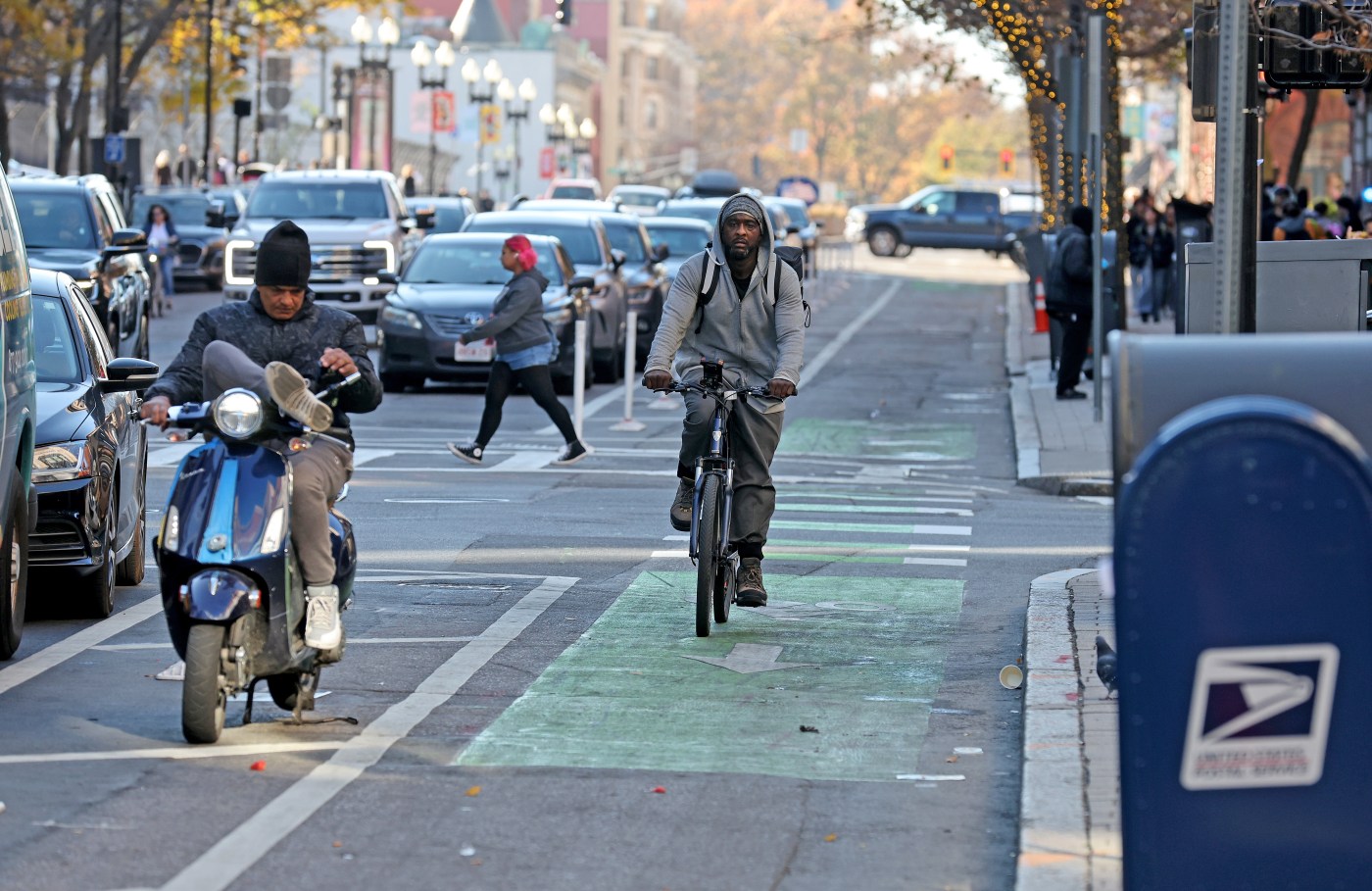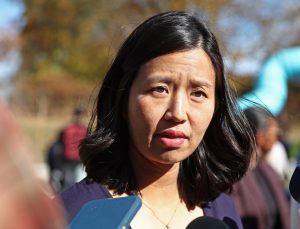
Boston is spending millions on bike lanes amid a budget crunch. Some wonder if the investment is worth it.
The Wu administration has spent millions installing bike lanes throughout Boston since the mayor took office, and is planning to spend millions more in future years, but some argue the hefty investment has led to more headaches than benefits.
An analysis of the city’s $4.7 billion capital plan for fiscal year 2025-29 reveals a series of projects ranging from expanding the bike share network, and implementing new bike corridors to provide cycling connections, to performing major street redesigns that involve installing new bike lanes in various neighborhoods.
The 13 projects involving bike lanes exceed $121 million in the capital budget, but it’s unclear from the data how much of that is devoted solely to implementing lanes for cyclists. Mayor Michelle Wu’s office said the city’s budget between FY23 and FY24 included $145 million in streets investments for capital upgrades, including sidewalks, repaving roads and ramps, and that bike lanes are built as part of larger projects.
The city built 15 total miles of new protected bike lanes since it announced its bike network expansion and safer streets initiative in 2022, at roughly $150,000 per mile, or about $2.25 million, the mayor’s office said.
“As our city continues to grow, Boston is working urgently so our roads are safe and smooth for all roadway users,” a Wu spokesperson said in a statement.
The spending comes amid a budget crunch, stemming from falling commercial property values and vacant office space, that has the mayor seeking a hike in business tax rates to provide relief to homeowners.
In the Back Bay, representatives from two neighborhood associations say a bike lane added this past summer on Boylston Street, where a new bus lane was also added, has created a “mess.” The project’s been bad for businesses in the area, where many people walk around to grab coffee, eat and shop, the reps said, and has created safety concerns rather than improve street accessibility.
“We are finding that it’s problematic for businesses that need to load and unload goods and services, and we’re very alarmed and concerned about the lack of pedestrian access that has occurred,” Meg Mainzer-Cohen, president of the Back Bay Association, told the Herald. “The overall functioning of the Back Bay is sorely impacted by this.”
Mainzer-Cohen sent an email to city transportation officials, Mayor Wu and the district councilor Sharon Durkan last week outlining a series of “enormous concerns” that have arisen in the neighborhood since bike lanes were added on several busy streets, including Boylston, Beacon, Berkeley and Dartmouth.
In the email, she mentioned that traffic congestion is driving customers away from restaurants and preventing the Back Bay from “functioning” at times. There’s a lack of predictability with traffic signaling that is causing safety concerns for pedestrians, she said, and poor planning has left bus and bike lanes underutilized by the intended users and required motorists to “zig and zag” through lanes for “dedicated turning.”
“The city’s top priority with all that infrastructure, and multiple millions of dollars, is to create a protected, connected bike lane system for bike riders, and in creating that there are unintended consequences for every other user,” Mainzer-Cohen told the Herald.
Martyn Roetter, chair of the Neighborhood Association of the Back Bay, said his group shares similar concerns — along with accessibility issues for emergency vehicles — but noted that they have fallen on deaf ears at city hall.
Whereas prior administrations he’s dealt with were open to changing their plans based on community feedback, Roetter said, “our concern is that doesn’t seem to be the attitude of this administration.”
“Basically it’s my way or the highway, or in this particular case, it’s my bike lane regardless of the pain,” Roetter said, adding of the bike lanes, “It’s a complete mess and I think that none of us really have any trust or confidence in what the city is trying to do, or if it really knows where it’s going.”
The city also encountered heavy community pushback to its so-called road diet in West Roxbury, which involved adding bike lanes on Centre Street.
Jarred Johnson, executive director of TransitMatters, a group that advocates for public transportation — which the city sees as being naturally complemented by biking — said “change is always hard” and typically involves pushback. He also cautioned that the feedback of neighborhood associations should be taken with a grain of salt, as they’re “not a neutral party in this.”
“There’s only so much that we can glean from them doing a back of napkin count on how much those bike lanes are being used, versus actually having the real data,” Johnson said.
The mayor’s office noted that the city’s analysis for the lanes installed in 2023 found that bike ridership grew on average by 56% on those streets. The Wu administration expects that number will “continue to rise.”
“We have also made improvements to tackle traffic through new signalization and curbside management to address double parking that creates congestion hotspots,” a Wu spokesperson said.
Johnson added that many of the people who frequent businesses on Boylston Street are pedestrians and cyclists, rather than motorists, due to limited and expensive parking in that Back Bay strip.
The bike lanes are partly geared at resolving that conundrum, by improving safety and accessibility for those patrons, he said, while citing the serious crashes that have hampered cyclists over the years.
The city’s bike network expansion aims to get 50% of residents within a 3-minute walk of a “connected bike route” over a three-year period. A citywide “better bike project” is listed at $17.3 million in the capital budget, according to Analyze Boston data.
When asked, Johnson said he sees the city’s efforts to expand its bike network as a solid investment that people will want to use, “even if it’s not readily apparent.”
“I’m not saying that every single thing about it is perfect,” Johnson said, “but I think once you see that these bike lanes have a chance to prove themselves, and as long as the network that connects to it is up to snuff, I think we’ll see a street that is able to bring more people down to that area to shop and then remove some of the conflicts that are already a much bigger cause of traffic congestion than bike lanes could ever be.”
This is the first in an occasional series digging into Boston’s city budget.
A cyclist cruises along Monday on the Boylston Street bike lanes. (Photo By Matt Stone/Boston Herald)


